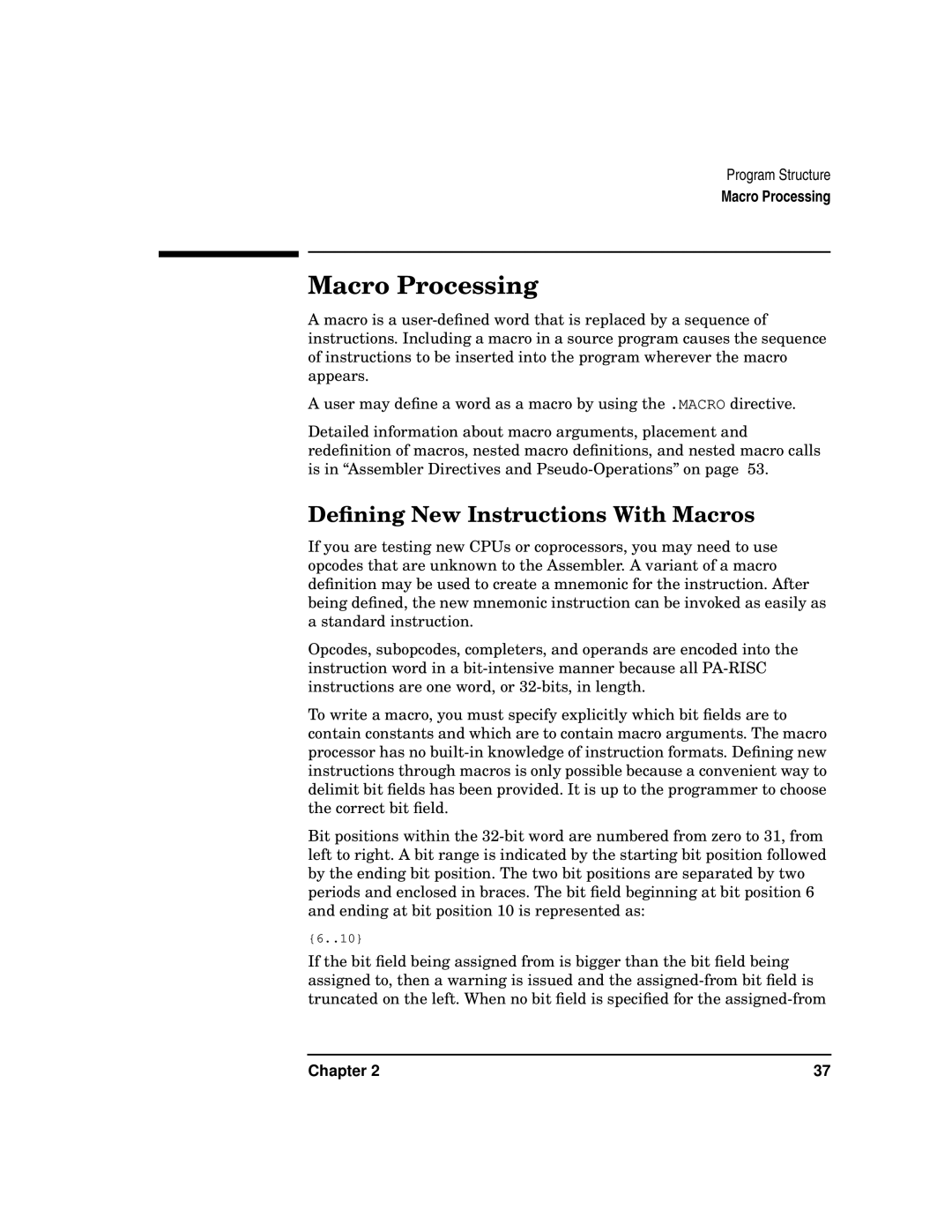
Program Structure
Macro Processing
Macro Processing
A macro is a
A user may define a word as a macro by using the .MACRO directive.
Detailed information about macro arguments, placement and redefinition of macros, nested macro definitions, and nested macro calls is in “Assembler Directives and
Defining New Instructions With Macros
If you are testing new CPUs or coprocessors, you may need to use opcodes that are unknown to the Assembler. A variant of a macro definition may be used to create a mnemonic for the instruction. After being defined, the new mnemonic instruction can be invoked as easily as a standard instruction.
Opcodes, subopcodes, completers, and operands are encoded into the instruction word in a
To write a macro, you must specify explicitly which bit fields are to contain constants and which are to contain macro arguments. The macro processor has no
Bit positions within the
{6..10}
If the bit field being assigned from is bigger than the bit field being assigned to, then a warning is issued and the
Chapter 2 | 37 |
